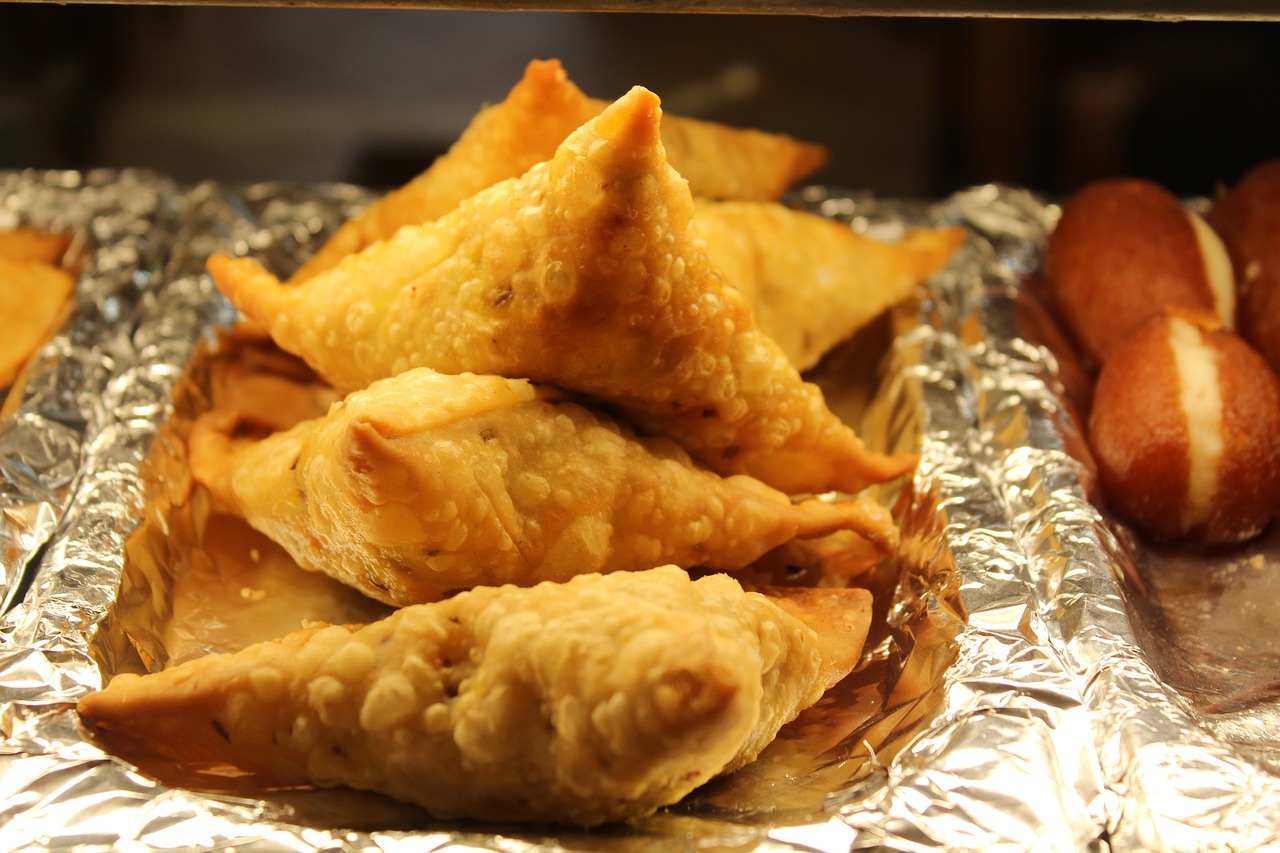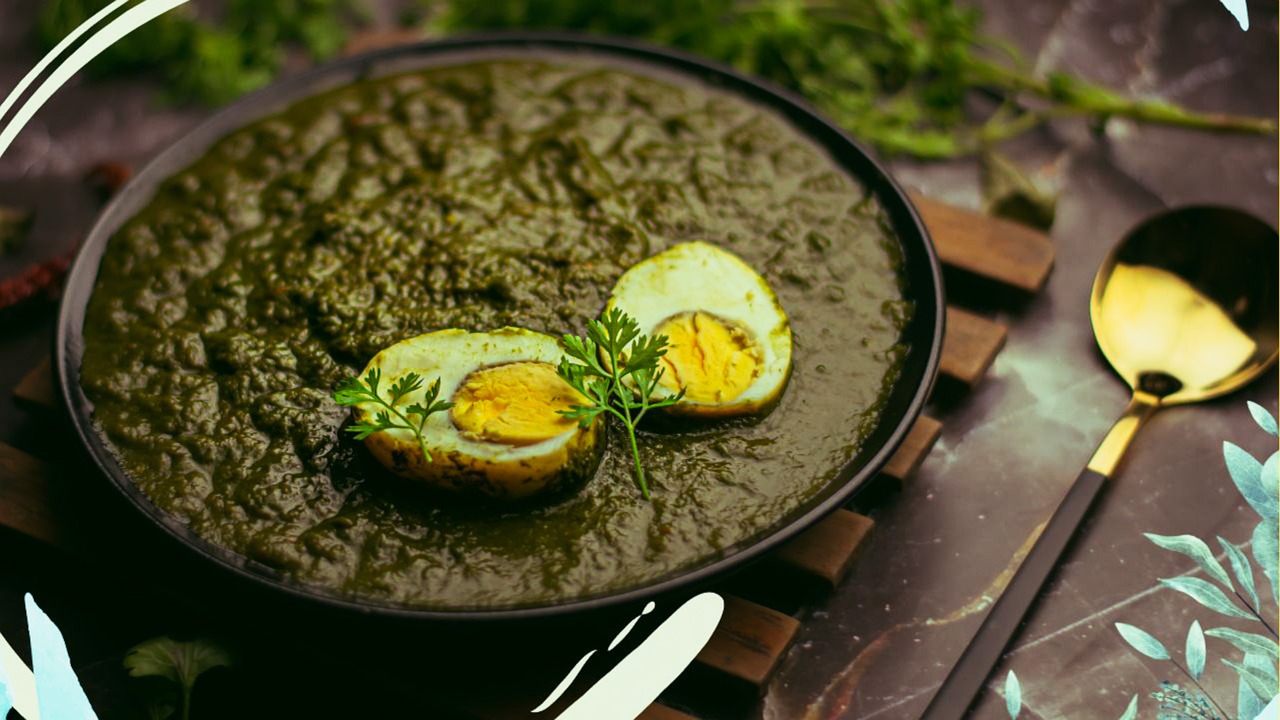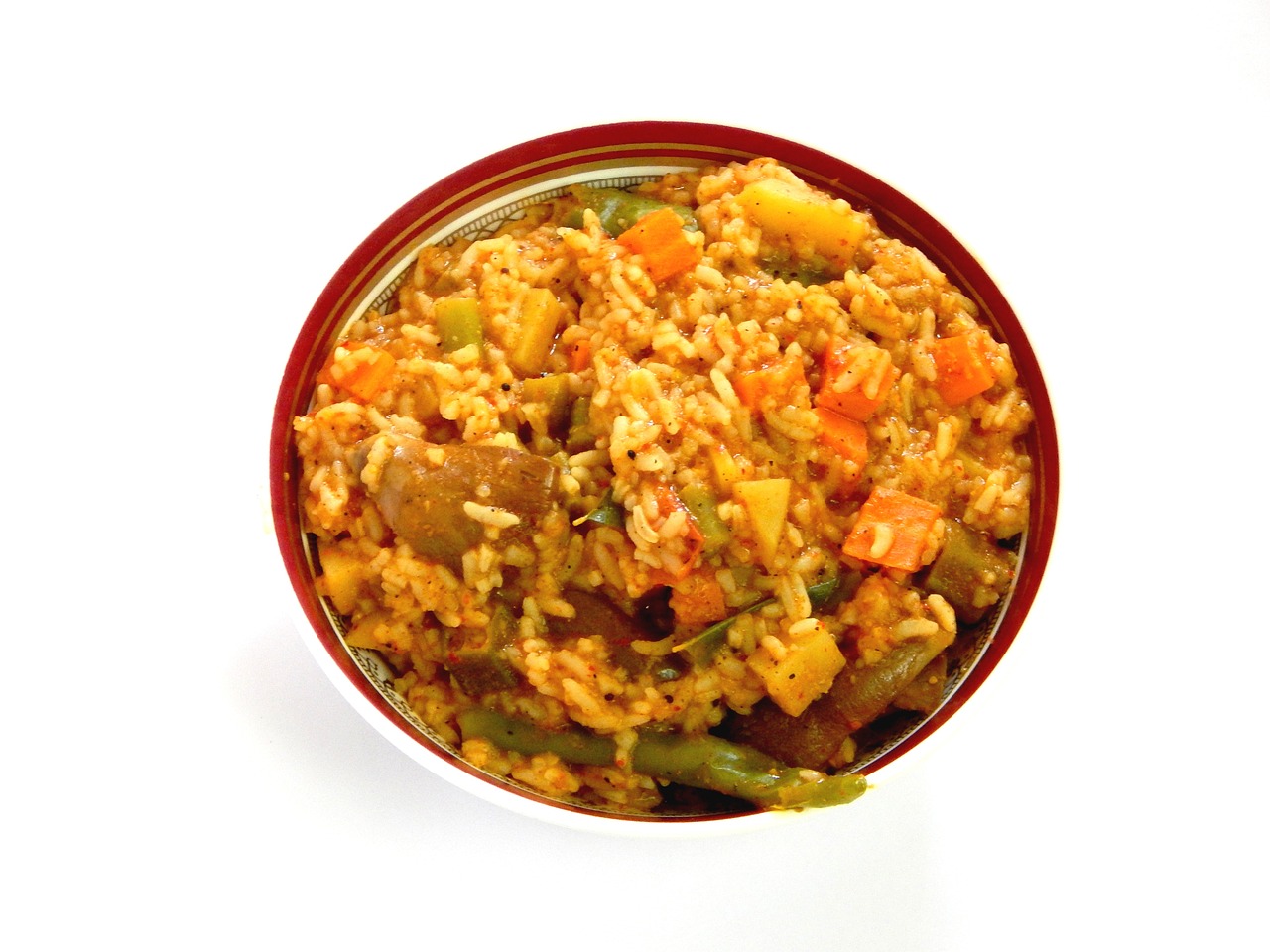Indian Samosas: Crispy Pastry Filled with Spiced Potatoes

Indian Samosas are a delightful treat that tantalizes the taste buds with their crispy exterior and flavorful spiced potato filling. These triangular pastries have become a beloved snack worldwide, known for their perfect balance of crunch and spice.
Samosas have a rich history that dates back to the Indian subcontinent, where they were originally created. Over time, these savory snacks have evolved and adapted, spreading their delicious influence to various corners of the globe. Their journey from a traditional Indian snack to a global favorite is a testament to their irresistible appeal.
The key to the deliciousness of samosas lies in the ingredients and spices used in their filling. Potatoes, peas, onions, and a blend of aromatic spices such as cumin, coriander, and garam masala come together to create a mouthwatering mixture that is then encased in a crispy pastry shell.
When it comes to cooking samosas, there are various methods to achieve that perfect golden crispiness. From preparing the dough to folding the pastry just right and deciding whether to fry or bake them, each step contributes to the overall texture and taste of the final product. The art of making samosas lies in mastering these techniques.
One of the most intriguing aspects of samosas is the regional variations that can be found across India and beyond. Different regions have put their unique spin on the classic snack, introducing variations in fillings, shapes, and sizes. Whether it's a spicy meat filling or a vegetarian option bursting with flavors, each variation adds a new dimension to the samosa experience.
History of Samosas
When it comes to the history of samosas, we are diving into a rich tapestry of culture and flavors that date back centuries. These iconic triangular pastries have a fascinating origin story that can be traced back to the Indian subcontinent. Imagine the bustling streets of ancient India, where vendors would skillfully craft these delectable treats, filling the air with tantalizing aromas.
Legend has it that samosas were first introduced by traders from Central Asia, who brought the concept of filled pastries to the region. Over time, the recipe evolved to incorporate local spices and ingredients, giving rise to the beloved snack we know today. The samosa's journey from a humble street food to a globally recognized delicacy is a testament to its enduring popularity.
As the samosa made its way across different regions, it underwent various adaptations to suit local tastes and preferences. Each culture added its own unique twist to the traditional recipe, resulting in a diverse array of flavors and fillings. From the streets of Delhi to the markets of Cairo, samosas have become a ubiquitous snack enjoyed by people of all backgrounds.
Today, samosas are not just a culinary delight but also a symbol of cultural exchange and culinary innovation. Whether you prefer the classic potato and pea filling or opt for a more adventurous meat or vegetable variation, there is a samosa out there for everyone. The history of samosas is a testament to the power of food to bring people together and bridge cultural divides.
Ingredients and Spices
When it comes to the delicious and flavorful world of Indian samosas, the key players are undoubtedly the ingredients and spices that make up the heart of this beloved snack. From the crispy pastry shell to the spiced potato filling, each component plays a crucial role in creating the perfect samosa experience. Let's dive into the essential elements that give samosas their unique and irresistible taste.
At the core of every samosa is the humble potato, which serves as the primary filling for this savory treat. Boiled and mashed potatoes are typically combined with a blend of aromatic spices to create a rich and flavorful mixture. Common spices used in samosa filling include cumin, coriander, turmeric, and garam masala, which contribute to the distinct taste profile of this popular snack.
Aside from potatoes, samosas can also feature a variety of other fillings, both vegetarian and non-vegetarian. Vegetarian options may include ingredients such as peas, lentils, paneer, or mixed vegetables, providing a diverse range of flavors and textures. On the non-vegetarian side, samosas can be filled with minced meat, such as lamb or chicken, seasoned with a blend of spices for a more robust taste.
When it comes to the pastry shell of samosas, a simple mixture of flour, water, and oil is used to create a pliable dough that can be rolled out and filled. The dough is then shaped into triangles or cones, filled with the spiced mixture, and sealed before being fried or baked to golden perfection. The combination of the crispy, flaky exterior with the savory, aromatic filling is what makes samosas a beloved snack for many.
To enhance the flavors of samosas, additional ingredients like fresh cilantro, mint, or lemon juice may be added to the filling for a burst of freshness. Some variations of samosas also incorporate ingredients like raisins, nuts, or even cheese to add a unique twist to the traditional recipe. The versatility of samosas allows for endless experimentation with different fillings and flavors, making each bite a delightful surprise for the taste buds.
Overall, the magic of samosas lies in the harmonious blend of ingredients and spices that come together to create a symphony of flavors and textures. Whether enjoyed as a snack on its own or as part of a meal, the humble samosa continues to captivate food enthusiasts around the world with its irresistible combination of crispy pastry and spiced fillings.
Cooking Methods
When it comes to cooking samosas, there are various methods that can be used to achieve that perfect balance of crispy exterior and flavorful filling. The process of making these delectable treats involves several steps, each crucial in creating the ultimate samosa experience. Let's dive into the cooking methods that will help you master the art of samosa preparation.
One of the first steps in making samosas is preparing the dough. The dough is typically made with flour, water, salt, and sometimes a bit of oil. Kneading the dough until it is smooth and elastic is essential for achieving the desired texture of the pastry shell. Once the dough is ready, it needs to be rested to allow it to relax and become more pliable.
After the dough has rested, it is time to roll it out into thin sheets. The thinness of the dough is crucial as it ensures that the pastry will be crispy when cooked. Using a rolling pin, roll out the dough evenly to create a thin, uniform layer that will encase the savory filling.
Next comes the filling - the heart of the samosa. The filling typically consists of spiced potatoes, peas, and sometimes meat or lentils. The key is to cook the filling until it is flavorful and fragrant, ensuring that every bite is bursting with deliciousness. Once the filling is ready, it is important to let it cool before assembling the samosas.
Assembling the samosas involves folding the pastry around the filling to create the iconic triangular shape. The technique for folding the samosas varies, but the goal is to seal the edges tightly to prevent the filling from spilling out during frying or baking. Crimping the edges with a fork or pinching them by hand are common methods used to seal the samosas.
When it comes to cooking the samosas, there are two main methods: frying and baking. Frying results in a crispy, golden-brown exterior, while baking offers a healthier alternative with a slightly lighter texture. Whichever method you choose, make sure to cook the samosas until they are evenly cooked and beautifully golden on all sides.
To ensure that your samosas are perfectly cooked, it is important to pay attention to the temperature of the oil or oven. Frying the samosas at the right temperature will prevent them from becoming greasy, while baking them at the correct temperature will ensure that they cook evenly and develop a nice crust.
Once the samosas are cooked to perfection, serve them hot with your favorite dipping sauce or chutney. The crispy exterior, flavorful filling, and aromatic spices make samosas a beloved snack that is perfect for any occasion. Whether you enjoy them as a quick bite or as part of a meal, samosas are sure to delight your taste buds with every bite.
Regional Variations
When it comes to regional variations of samosas, the diversity and creativity know no bounds. Each region puts its unique spin on this beloved snack, resulting in a delightful array of flavors and fillings that cater to different palates. Let's take a flavorful journey across India and beyond to explore some of the most intriguing regional variations of samosas:
- Punjabi Samosas: Hailing from the northern state of Punjab, Punjabi samosas are known for their robust and spicy fillings. These samosas often feature a hearty combination of spiced potatoes, peas, and sometimes minced meat, all encased in a crispy pastry shell.
- Goan Samosas: In the coastal state of Goa, samosas take on a unique seafood twist. Goan samosas are filled with a delicious mixture of shrimp or fish, along with aromatic spices like coconut, tamarind, and curry leaves, giving them a distinct coastal flavor.
- Rajasthani Samosas: Rajasthan's version of samosas is known for its rich and indulgent fillings. These samosas often contain a decadent blend of lentils, dried fruits, nuts, and a medley of warm spices like cumin, coriander, and cardamom, creating a royal flavor profile.
Furthermore, as samosas have traveled beyond Indian borders, they have adapted to local tastes and ingredients, resulting in even more intriguing variations:
- Middle Eastern Samosas: In the Middle East, samosas are often filled with a savory mixture of minced lamb or beef, pine nuts, and fragrant spices like cinnamon and allspice. These samosas may also feature a flakier pastry crust, influenced by the region's culinary traditions.
- African Samosas: Across Africa, samosas have been embraced and transformed into unique delicacies. African samosas can vary from savory to sweet, with fillings ranging from spiced ground meat to sweet fruits like bananas or dates, showcasing the continent's diverse culinary landscape.
- Western Fusion Samosas: In Western countries, chefs and home cooks have experimented with fusion samosas, incorporating non-traditional ingredients like cheese, bacon, or even chocolate. These creative interpretations add a modern twist to the classic snack, appealing to adventurous food enthusiasts.
Whether you prefer the traditional spiced potato filling of the original samosa or enjoy exploring innovative variations, the world of samosas offers a tantalizing range of flavors and textures to satisfy every craving. So, next time you bite into a samosa, savor the cultural tapestry woven into each crispy, flavorful bite.



 HazalVardal
HazalVardal 





